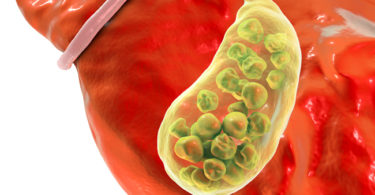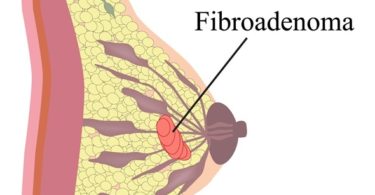Author:
Dr Sneha John,
Assistant Professor, Dept. of Surgery,
Yenepoya Homoeopathic Medical College & Hospital,
Naringana, Mangalore, Karnataka.
Abstract
Homoeopathic remedies are very well applicable in case of corns. Corns are a type of callosities which found at the site of pressure. They are of 2 types, hard corns and soft corns. It can occur due to internal cause such as deformities of bone as well as external causes such as pressure and friction due to inappropriate shoes. So these produce localized hyperkeratosis of skin and forms corns. The first and foremost thing to be noted is the preventive measures. Even if the above is not reliving the complaint we can think of Homoeopathic remedies. The remedies will vary upon the symptom produced by the patient and the recurrence of symptom suggestive of miasmatic remedy as an intercurrent. There are numerous number of medicines available in homoeopathy such as Ant-Crud, Sil, Nit acid, Ran bulb, Thuj, Sulph, etc.
Keywords: Heloma, Callosities, Hyperkeratosis, Miasms, Potencies
Introduction
Corns are said to be a localized hyperkeratosis of skin. Horny induration of a cuticle with hard centre. They have tendency for recurrence after excision. (6)
Definition
A corn represents a circumscribed, sharply demarcated area of traumatic hyperkeratosis. The term heloma (Greek helus, a stone wedge) is often used by podiatrists to denote a corn (Latincornu, horn).(9)
Aetiology
Inappropriate shoes, abnormal foot mechanics, and high levels of activity produce pressure and friction that lead to corns. Mainly it occurs at the site of pressure such as soles and toes.(6)And also deformities like bony prominences, prominent condylar projection, malunion of a fracture, faulty foot mechanics, cavovarus foot, toe deformity (claw, hammer, mallet), short first metatarsal, hallux rigidus, transfer lesion from osteotomy or removal of adjacent metatarsal head.(9)
Pathogenesis
Over the condyles of the heads and bases of the metatarsals and phalanges have many projections. So, a pressure applied to the skin over- lying those bony projections can cause an activation of a protective mechanism.(3) It includes accumulation of the horny layer of the epithelieum. But later this can even cause pressure to the underlying structures. Abnormal mechanical stresses may be extrinsic (from without) or intrinsic (from within). Intrinsic and extrinsic factors are often combined, as in the claw toe the intrinsic factor is the toe deformity, and the extrinsic factor is the toe box of the shoe.(9)
Types & Clinical Features
It has a visible translucent central core which presses deeply into the dermis, causing pain and sometimes inflammation.(9)
There are two types of corns:-
Hard Corn
It is localized area of thickening over a bony projections like heads of metatarsals which presses over the adjacent nerves causing pain. It can get infected causing severe pain and tenderness with inability to walk. It is smaller lesion which is pushed deep into the skin forming a localized palpable painful/tender nodule with a central yellow – white core of dead cornified skin.(3) The hard corn (helomadurum) represents the classic corn a dry horny mass most commonly found on the dorsolateral aspect of the fifth toe or the dorsum of the interphalangeal joints of the lesser toes. It is often termed the digital corn(9). Histologically, it is a severe keratosis with a central core of degenerated cells and cholesterol. (2)
Soft Corn
The soft corn (helommolle) is an extremely painful lesion that occurs only interdigitally and is probably best termed an interdigital corn.(9)Due to friction of bases of adjacent proximal phalanges it usually occurs between 4th and 5th toes.(2)Sometimes two opposing lesions can be found and are termed “kissing lesions”.(9)
Diagnosis
Patients gait should be observed, and the alignment of their feet should be examined for faulty mechanics (cavovarus foot, etc). Patients should be asked about their foot wear and previous treatments (such as osteotomies, orthoses, etc). The location and characteristics of the keratotic lesions should be noted, and they should be palpated to assess which bony prominence is involved. Pressure studies (pedobarographs) may help to define the exact location of increased plantar pressure and to differentiate between transfer lesions and lesions caused by direct pressure.(9)
A biopsy with microscopic evaluation can be done but is seldom necessary. Radiographs of weight bearing feet are useful for identifying bony prominences may be the cause of the corn.(11)
Differential Diagnosis
- Tinea Pedis
- Contrast with interdigital soft corn
- Plantar
Wart
- Contrast with hard corn
- Plantar Warts bleed when shaved
- Plantar Warts are tender to lateral compression
- Plantar Warts have black dots (thrombosed vessels)(12)
Distinguishing features of warts and plantar corns (Table: 1)
Sometimes, a wart can have a similar appearance to a corns. Verrucas and plantar corns are best distinguished by careful paring of the thickened stratum corneum with a sharp scalpel blade. As the cornified layer of skin over a verruca is removed, the end arteries appear there may be punctate bleeding, or black dots may be visible if the end arteries are thrombosed.(9)
Other features: –(12)
| Wart | Plantar corns |
| Relatively rapid onset | Develops over months or years |
| May or may not be under bony prominences | Localised under bony prominences |
| Skin lines pass around lesion | Skin lines pass through lesion |
| Maximum pain with squeezing side to side | Maximum pain with direct pressure |
| End arteries visible on paring | No end arteries visible on paring |
Complications
If patient is diabetic, hard corns can get easy infected and forms abscess and ulcers. Corn may be associated with bursae causing bursitis. Corn often recurs after excision.(2)
Preventive Measures
- Wearing soft shoes/soft pads at the pressure points of the sole which eliminating the pressure is very important to prevent recurrence.
- Avoid excision of corn unnecessarily in diabetic (especially with neuropathy) and in ischemic foot.(2)
- Use toe silicone sleeves.(11)
- Pads for hard corns
- Silicone toe sleeves
- Foam padding
ii. Pads for soft corns (applied to web space)
- Lamb’s
Wool padding
- Foam toe spacer
- Other pads
a. Polymer gel (e.g. Cushlin Gel) (12)
- Keep hands and feet moisturized. Soaking the corn or callus in warm water for 5 to 10 minutes, then filing or scraping the area with a pumice stone. Circular or sideways motions help remove dead skin.(10)
- Patients must be advised to wear low heeled shoes with a soft upper and a roomy toe box is imperative. Extra depth is needed to accommodate corns on deformed toes (such as hammer or claw toes), and extra width is needed for corns on the lateral aspect of the fifth toe and interdigital soft corns.(9)
Miasmatic analysis(2)
Sycotic patients are subject to corns with thickening of skin (Hypertrophied skin). Reappearance of growth, patients feel relieved.(1)
Homoeopathic Management(1,4,5,7,8)
Usually it appears as an acute disease. So it will be treated by taking an acute totality of case. If there is any recurrence it may be followed by anti- sycotic remedy. Potencies and repetition will vary according to the individuality and susceptibility of the patient.
ANTIMONIUM CRUDUM
It is one of the most commonly used medicines for corns. Tendency to buildup and indurate belongs to the remedy. The soles of the feet are covered with corns. Pressive pains; Intense pain in the soles of feet and it makes walking difficult. Horny in shape and texture. The patient is mostly obese or overweight in build.Hard horny excrescences grow under the nail and extremely painful. Very sore to walk upon have numerous centers of little corns
THUJA
Corns- itching &burning; >Touch, scratching, rubbing; < cold bathing
SULPHUR
Burning pain in the corns<warmth of bed. Painful corns yield very quickly to Sulphur. Profuse perspiration on the feet. Corns are inflamed causing pain, swelling and redness in the affected area. Pressing pain in the corns is quite common.
SILICEA
Corns are soft to touch; usually the feet are sore and aching. Profuse perspiration on the feet & offensive. It is also very strongly indicated in any sort of pus formation that may accompany corns. The patient is usually chilly and does not feel comfortable in the winters. Usually the feet remain icy cold.
LYCOPODIUM
Aching pain in the affected area. Burning or drawing pain; most characteristic pain is pressing pain. The heel pains as if setting foot on a pebble. Usually the right foot is involved. One foot is hot while the other is cold. The toes and fingers seem contracted. Skin becomes thick and indurated; Painful callosities on soles.
FERRUM-PICRIC
Yellow discoloration of the corn and the immediate surrounding area. It is also indicated when the corns have resulted from an exertion or too much walking.
RANUNCULUS BULBOSUS
Corns sensitive; Horny skin. Burning and intense itching; worse, contact, to touch.
CONCLUSION
One of the most common conditions affecting our feet is corns. Surgery can be avoided and corns can be cured with homeopathy. There is effective treatment for Corns in homeopathy. Recurrence is very common after surgical removal. Many people try to remove corns by cutting or trimming them with a sharp instrument like knife. This may worsen the condition resulting in unnecessary injury. Diabetics especially should never try this type of treatment. Sectoral homoeopathic medicine can help the patient from corns and using anti-maismatic remedy as an intercurrent will help the patient from recurrence along with preventive measures. Once treated successfully with homeopathic medicines, recurrence chances are very less.
References:
- AllenClayHenry, M. D.Keynotes And Characteristics With Comparisons of some of the Leading Remedies of the Materia Medica. 4th edition.New Delhi: B Jain Publishers (P) Ltd.p.19, 99,119, 170
- Banerjea Kumar Subrata.(2010) Miasmatic Prescribing.2nd extended edition . New Delhi: B Jain Publishers (P) Ltd.p.82,83
- Bhat Sriram M. SRB’S,Clinical Methods of Surgery, 1st edition.jaypee brothers medical publishers (P) Ltd, p.80,81
- Boericke William.(2017) Boericke’s New Manual ofHomoeopathic Materia Medica with Repertory.9thed.New Delhi: B Jain Publishers (P) Ltd.
- Clarke Henry John. A dictionary of practical material medica. I, II vol. London The Homoeopathic Publishing Company.p.320,587, 945, 1419.
- Das.S. A Concise Textbook of Surgery. 7th edition. S.Das.Publishers (P) Ltd.p.151
- Kent. J. T. (2018) Lectures of Homoeopathic Philosophy With Class Room Notes And Word Index.7th ed. New Delhi: B Jain Publishers (P) Ltd.
- Phatak.S.R.Materia Medica of Homoeopatic Medicines. 2nd ed. New Delhi: B Jain Publishers (P) Ltd.p.53, 435, 314, 592, 675, 708,
- https://fpnotebook.com/legacy/Ortho/Foot/Crns.htm
- https://www.emedicinehealth.com/corns_and_calluses/article_em.htm
- https://www.medicalnewstoday.com/articles/172459#home_treatment
- https://www.researchgate.net/publication/14554665_Callosities_corns_and_calluses





